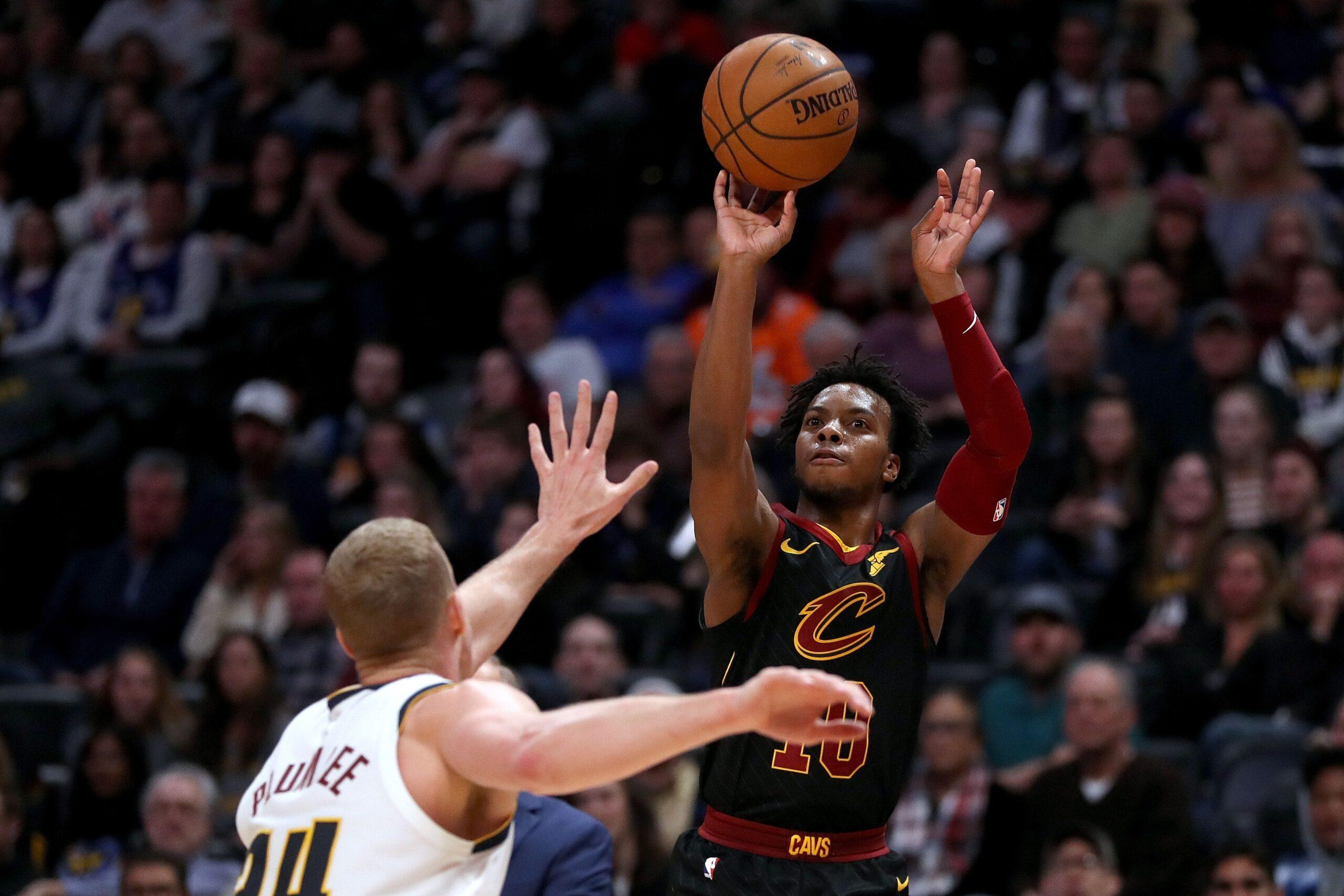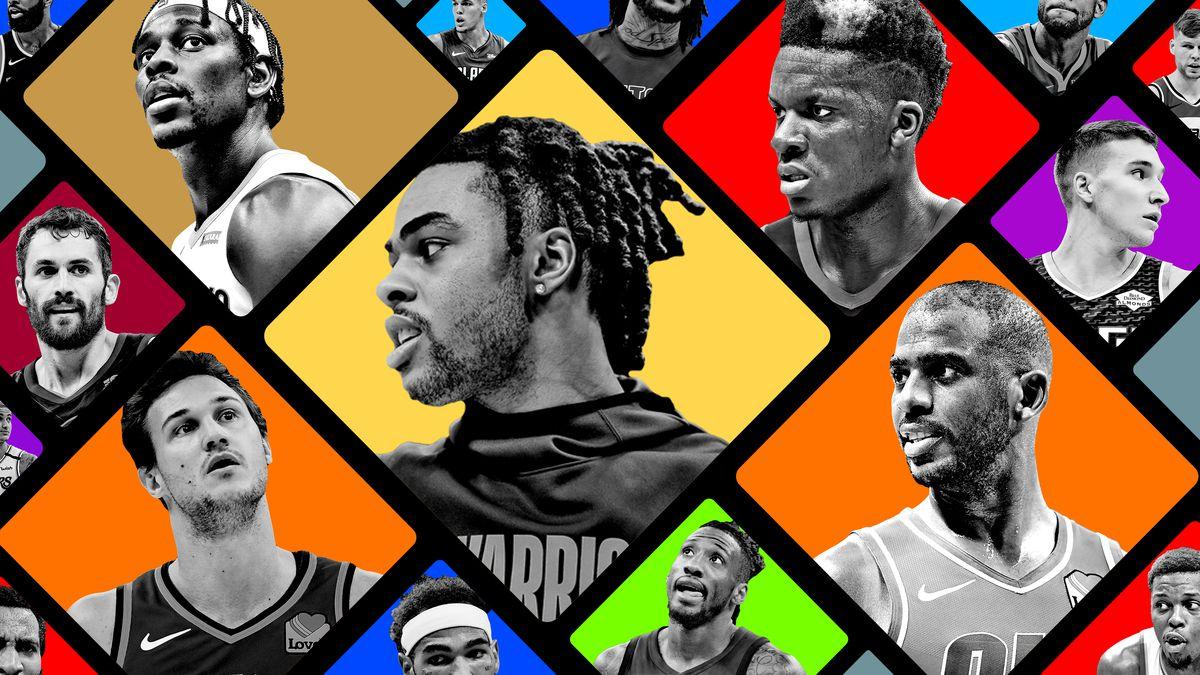It’s almost never too early to begin projecting a rookie’s performance for the future. Within 10 games, first-year production begins to approximate how the player will perform over the full length of a rookie contract. Now that the 2019-20 regular season is nearly halfway through, we have ample data to analyze the newest class of rookies.
These early returns are somewhat less than inspiring. In early December, John Hollinger wrote for The Athletic that aside from the top two picks, this class “is every bit as bad as people feared,” the lottery is “a stinker,” and several of its members are “frightfully bad.” A month later, rookie assessments are no more flattering—both in the moment and in what they forecast about rookies over the rest of the season and beyond.
Just like last year, we’ll generate a set of player comps to gain a sense of the ways each prominent rookie’s career might unfold. We’ll use a mix of process stats (usage rate; 3PAr, or 3-point attempt rate; and FTr, or free throw rate) and results stats (TS%, or true shooting percentage, a measure of overall scoring efficiency; and points, rebounds, and assists) to compare each current rookie to every other rookie this century to find those with the closest overall statistical profile.
The model involves a few tweaks from last year. Primarily, it removes a defensive component (last year’s included a steals-plus-blocks category) because individual defense is so difficult to capture, particularly in basic box score stats. (In other words, these comps are offense only.) A couple of behind-the-scenes fiddles refine the calculations further. For instance, to better account for playing time differences and the increased pace now versus earlier in the century, it uses per-75-possession points, rebounds, and assists instead of their per-game equivalents.
A few caveats: As Trae Young displayed last season (15.5 points per game in the first half of the season, 22.8 in the second), players’ fortunes can change after the halfway point, thus lifting or dropping the quality of their comps. Moreover, the comps themselves are far from a perfect predictor. For instance, rookie LeBron James’s top two comps since 2000 via this updated model are Russell Westbrook … and Michael Carter-Williams.
Still, these comps can prove useful as a road map, outlining a set of possible paths the newbies can travel. They also help determine the proper level of excitement—or, in many cases with this group, concern—for the start to their careers.
Below, we’ll detail the top five comps and takeaways for 2019’s lottery picks, in the order in which they were picked. Top pick Zion Williamson doesn’t appear here because he hasn’t played at all in the regular season, nor does Romeo Langford, the no. 14 pick who’s played fewer than 100 minutes. After discussing each of the rest of the lottery picks, we’ll take a quick spin through other rookies of note—and make sure to scroll to the end, because the most singular player in the class wasn’t a lottery pick at all. (All stats are through Saturday’s games.)
Ja Morant, Grizzlies
Top five comps: (1) Steve Francis, (2) Tyreke Evans, (3) Darren Collison, (4) Trae Young, (5) Brandon Roy
What it means: Morant is on pace to be the ninth rookie in NBA history to average 17 points and six assists per game. The previous eight such players form an elite bunch: Oscar Robertson, Magic Johnson, Isiah Thomas, Damon Stoudamire, Allen Iverson, Francis, Damian Lillard, and Young. So even a quick perusal of Morant’s most basic per-game numbers suggests his immense potential.
So do his broader advanced and underlying numbers, as reflected here. But these comps say more than just that Morant will be—or, in fact, already is—a great offensive guard. Note that four of his top five comps were rookies in 2009-10 or earlier. He’s a bit of a throwback guard to the pre-spacing era, a slasher who scores and creates by penetrating to the rim more than pulling up from 25 feet. (Young, the one exception here, appears on Morant’s comp list because his other statistics are incredibly similar, even if his 3PAr diverges considerably.) The sixth name on Morant’s comp list adds even more evidence: Dwyane Wade.
Morant’s shot was a question coming into the draft, and among other high-usage rookie guards (25 percent usage rate or higher) in the past decade, Morant’s 3-point attempt rate is the lowest—behind even notorious brick-layer Michael Carter-Williams.
High-Usage Rookie Guards in the Past Decade, Part 1
Of course, Morant boasts the best scoring-efficiency numbers of any member of that group, edging out future All-Star–level offensive talents in Luka Doncic, Donovan Mitchell, and Young.
High-Usage Rookie Guards in the Past Decade, Part 2
Morant’s shooting numbers when he does let fly are encouraging, too (39 percent on 2.3 3-point attempts per game, 80 percent on free throws). He certainly possesses the ability to grow more comfortable from deep, like Mike Conley and Kyle Lowry before him. He’d be a dynamic playmaker regardless, but in the modern NBA, that last step might be the crucial factor in his ascent to leading option on a winning team, versus settling in the Francis or Evans role of not quite dominant enough to spark a contender.
RJ Barrett, Knicks
Top five comps: (1) Metta World Peace, (2) Josh Jackson, (3) Rudy Gay, (4) MarShon Brooks, (5) Nate Robinson
What it means: Of the 120 rookies this century who have attempted enough shots to qualify for the shooting leaderboard, Barrett ranks 117th in TS%. Only Elfrid Payton, Adam Morrison, and Emmanuel Mudiay are worse. (Kevin Knox is 112th; new Knick Dennis Smith Jr. is 114th; Frank Ntilikina, were he to qualify, would be tied with Mudiay for last place. The Knicks sure know how to pick ’em.)
So while the rest of Barrett’s relevant statistics are average or better relative to other rookies this century, this one blight is so glaring that it would appear to place a firm limit on his ceiling. Even Gay, the best of this bunch offensively, was derided as an inefficient scorer—perhaps the prime example of such a player at the dawn of the current analytics movement. And that comp reflects the best-case scenario for Barrett. (Remember, this exercise doesn’t take defense into account, so Metta World Peace’s value largely dissipates.) Worst case? Well, the rookie numbers for fellow top-five pick Jackson are frightfully similar to Barrett’s—if anything, Barrett’s look worse—and he’s already been salary-dumped and sent to the G League full time.
RJ Barrett vs. Josh Jackson As Rookies
De’Andre Hunter, Hawks
Top five comps: (1) Frank Jackson, (2) Wayne Ellington, (3) Ben McLemore, (4) Wesley Johnson, (5) Dillon Brooks
What it means: Hunter’s taking a lot of 3s but not doing much else in his first season; he’s not standing out in any statistical area despite leading all 2019-20 rookies in minutes per game. The eclectic composition of his comps list reflects this muddled standing, and Hunter isn’t yet excelling on defense, either, despite entering the league with that purported strength. He’s settled in as an unremarkable wing, and as these names can attest, it’s not easy to break free from that mold—even, as in the cases of McLemore and Johnson, if one entered the league as a top-10 selection.

Darius Garland, Cavaliers
Top five comps: (1) Jimmer Fredette, (2) Brandon Knight, (3) Jamal Murray, (4) Leandro Barbosa, (5) Bogdan Bogdanovic
What it means: At this point last season, teammate Collin Sexton’s top comps were MarShon Brooks and Chucky Atkins, suggesting a lack of lead guard potential. The same concern appears with Garland. This takeaway doesn’t mean he can’t become a reliable NBA contributor—Knight, Murray, and Barbosa all reached varying degrees of acclaim—and while Garland could pass better and get to the free throw line more, he’s not an offensive zero. These names do, however, cast further doubt on the Cavaliers’ drafting adventures: They’ve picked two point guards in the lottery in as many years and don’t seem to have an actual point guard to show for it.
Jarrett Culver, Timberwolves
Top five comps: (1) Rasual Butler, (2) Stanley Johnson, (3) Will Barton, (4) DerMarr Johnson, (5) Iman Shumpert
What it means: Frankly, if we didn’t label the stats for Hunter, Culver, and the upcoming Cam Reddish, it would be impossible to discern which player is which. Here, let’s try it!
2019 Lottery Wing Comparison
To Culver’s credit, the Wolves wing has recently perked up, scoring in double figures in seven consecutive games on a team ravaged by injuries. But his overall profile induces a shrug, as do his accompanying top comps. Like Hunter, he doesn’t stand out in any statistical area—at least positively; on the negative side, he stands out with his abysmal 44 percent free throw stroke—and will likely need to rely on his defense to remain a viable long-term starter in the league.
The answer, by the way: Player A is Reddish, B is Culver, and C is Hunter. They’re not exactly suffering from the same issues, but it’s close: The only separator is Hunter’s relative efficiency, with a meaningfully higher TS% than the other two.
Coby White, Bulls
Top five comps: (1) J.R. Smith, (2) Jamal Murray, (3) D’Angelo Russell, (4) Malik Monk, (5) Jason Richardson
What it means: White hasn’t met an NBA shot he doesn’t want to take. No qualified 2019-20 rookie shoots more frequently than the Bulls guard (16.7 field goal attempts per 75 possessions), and his comps point to extreme comfort with letting it fly from all sectors, at any time. Some of White’s statistical quirks reflect his odd usage pattern—a point guard in college, White has spent only 8 percent of his time with the Bulls at point guard, according to Basketball-Reference’s positional estimates, because of the glut of distributors on Chicago’s roster. White’s early profile is far from perfect, but this level of familiarity behind the line makes him a fit for the NBA in the 2020s, or at the very least a strong candidate for inclusion in highlight reels.
Jaxson Hayes, Pelicans
Top five comps: (1) Mason Plumlee, (2) Marc Gasol, (3) Jarrett Allen, (4) Mitchell Robinson, (5) Jeff Withey
What it means: It’s not easy to find comps for Hayes, who ranks in the 99th percentile among rookies this century in TS% and the 98th percentile in FTr. Essentially, he’s a low-usage, high-efficiency roll man on offense, so comps to the likes of Allen and Robinson make sense. Hayes’s NBA future will be defined by his defense, first, and his fit next to Williamson, second—mainly, if Hayes’s rim runs will over-cram the Pelicans’ spacing—but a player with his interior ability can, at a minimum, contribute to a high-octane offense. He probably can’t do much more, barring an extreme Gasol-style development, but dunks always have value.

Rui Hachimura, Wizards
Top five comps: (1) Omri Casspi, (2) Morris Peterson, (3) Rudy Gay, (4) Charlie Villanueva, (5) Harrison Barnes
What it means: Like the rest of this wacky Wizards team, Hachimura has displayed flashes of impressive offensive potential while posting pitiful defensive numbers by both traditional and advanced metrics. Luckily for him, this exercise ignores the latter—so Hachimura presents as a viable, if not wonderfully efficient, scoring forward. His shot distribution could use some fine-tuning, as Hachimura ranks in the bottom half of rookies in both 3PAr and FTr, meaning he’s settling for too many low-efficiency looks, but at least he’s converting those challenging shots so far.
Cam Reddish, Hawks
Top five comps: (1) DerMarr Johnson, (2) Nikoloz Tskitishvili, (3) Ben McLemore, (4) Quincy Lewis, (5) Stanley Johnson
What it means: Well, we knew Reddish’s comps wouldn’t be pretty after the early lottery wings chart, and here’s the final proof. In The Ringer’s NBA Draft Guide last spring, Kevin O’Connor wrote that Reddish “projects as a plus shooter” because “his mechanics look smooth,” but noted that he’d struggled to turn those aesthetics into actual in-game success. The same appears true in his NBA introduction: The Hawks rookie ranks in the second percentile of rookies this century in TS%; he’s shooting 38 percent on 2-pointers and 26 percent on 3s.
His comps are a dispiriting and scattered collection of failed prospects, hailing from different positions and decades but united in their NBA struggles. All five listed here were first-round picks (all but Lewis, who went 19th in 1999, were picked in the top eight), but none of them averaged double-digit points for their career. McLemore, now resurgent in Houston, might represent Reddish’s best-case offensive scenario, and even he took seven seasons to find himself as a role player in an extreme niche. (Incidentally, one of O’Connor’s projected comps for Reddish was “bigger Ben McLemore.” The stats and scouts agree!)
Cameron Johnson, Suns
Top five comps: (1) Davis Bertans, (2) Alex Abrines, (3) Bojan Bogdanovic, (4) Cedi Osman, (5) Landry Shamet
What it means: Before the 2019 draft, O’Connor wrote that Johnson’s offensive strengths were his shooting and self-awareness to take a complementary role, while his weaknesses were an inability to create off the dribble and finish at the rim. Johnson projected as a single-issue spot-up shooter—and he sure knows who he is, because that’s exactly how the Suns forward has played through his first half-season. His top comps were also spot-up shooters (though Bogdanovic has certainly become a better-rounded scorer); in fact, the only rookies this century with a higher 3PAr than Johnson were Bertans, Abrines, Shamet, and Terrance Ferguson. The Suns’ decision to trade back and select Johnson, who is older than Devin Booker, in the lottery remains something of a puzzle, but at least he’s discovered his NBA destiny already. That’s more than most of his fellow lottery picks can say.
PJ Washington, Hornets
Top five comps: (1) Jaylen Brown, (2) Rodions Kurucs, (3) Omri Casspi, (4) Jayson Tatum, (5) Cedi Osman
What it means: Washington might have the best long-term outlook of any lottery wing. He has the second-best TS% of any qualified rookie in the class (more on no. 1 in a moment), and despite playing predominantly as a power forward, Washington takes—and makes—a healthy rate of 3s. But he’s not a one-dimensional player, instead contributing across the board and registering as roughly average or better in every stat tracked for this project. The question is how Washington will adjust to a greater workload (his 18 percent usage rate is his lowest number relative to other rookies)—if he blossoms like the Celtics wings or stalls like the others on the list.
Tyler Herro, Heat
Top five comps: (1) Buddy Hield, (2) Jamal Murray, (3) Chase Budinger, (4) Mindaugas Kuzminskas, (5) Kyle Kuzma
What it means: I think Herro and Hield are the same player.
Tyler Herro vs. Buddy Hield As Rookies
In fact, no other 2019 lottery pick has a closer similarity score to any previous rookie than Herro to Hield. The Heat found a keeper at pick no. 13.
Assorted Others
With a lottery this “frightfully bad,” in Hollinger’s words, it’s no surprise that several of the most promising rookies come from further down the draft board. Here are just a few final notes on comps from this class:
• The most singular player in this class is Brandon Clarke, whose closest comp isn’t close at all. For instance, Hunter, blandly in the middle as a wing, has an astounding 75 former rookies with closer comp scores than Clarke has with anyone. That’s because the Grizzlies big man is unprecedented in his scoring efficiency, boasting a 68.5 TS%, a full five points higher than every other qualified rookie in NBA history. After that factoid, we don’t even need comp names to know Clarke’s promise.
• Although Kendrick Nunn’s numbers have tailed off a bit over the past month, the Miami rookie emerges with encouraging takeaways from this exercise, much like teammate Herro. All of Nunn’s top comps went on to (or look like they will go on to) long, productive careers, with some reaching max contract status: D’Angelo Russell, Brandon Knight, Jamal Murray, Klay Thompson, and O.J. Mayo.
• Matisse Thybulle does not shine on offense. He’s a defensive menace—one of the NBA’s best wing stoppers already, and a potentially crucial piece for the 76ers this spring—but doesn’t tend to fill the box score on the other end. Among rookies this century, he ranks in the 12th percentile in usage rate and the seventh in points per 75. He makes a lot of 3s, though, and scores with some efficiency—and his no. 1 comp, with a closer similarity score than even Herro and Hield, is Mikal Bridges, with nearly identical numbers across the board. Why does this comp resonate? First, the 76ers picked Bridges last season before trading him to Phoenix on draft night. Second, Bridges is also an ace wing defender—so even though this exercise doesn’t measure defense at all, it still manages to wed these two 3-and-special-D wings.
• It’s not all bad news for the Cavaliers: Late first-round pick Kevin Porter Jr., sent to Cleveland on draft night, has the profile of a useful complementary wing. His top comps are Mike Dunleavy Jr., Shane Battier, and Stephen Jackson.
• And finally, Michael Porter Jr. is still a rookie this season, after not playing at all in his first year under an NBA contract. The Nuggets forward, picked in the 2018 lottery, hasn’t played enough minutes to make his comp conclusions especially meaningful—only 10.6 minutes per game across 29 games—but even in that short span, his numbers exude a reasonable sense of his style and fit on offense. His top comps are Lauri Markkanen and Kyle Kuzma, pegging Porter as a potentially dynamic secondary scorer who can’t pose as an elite creator by himself, but would be best suited as a no. 3 option.

